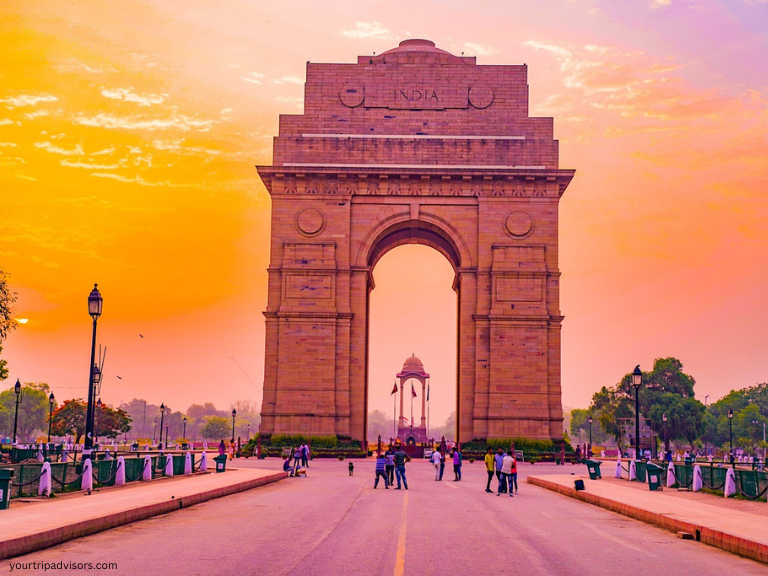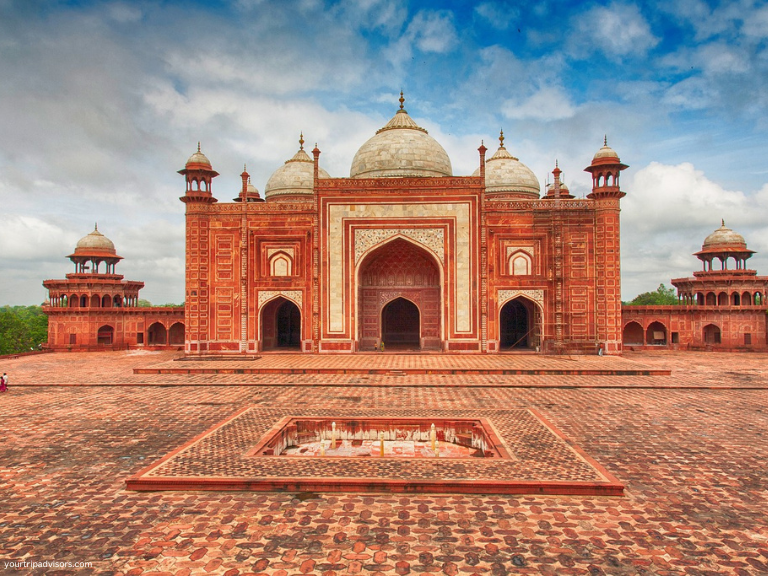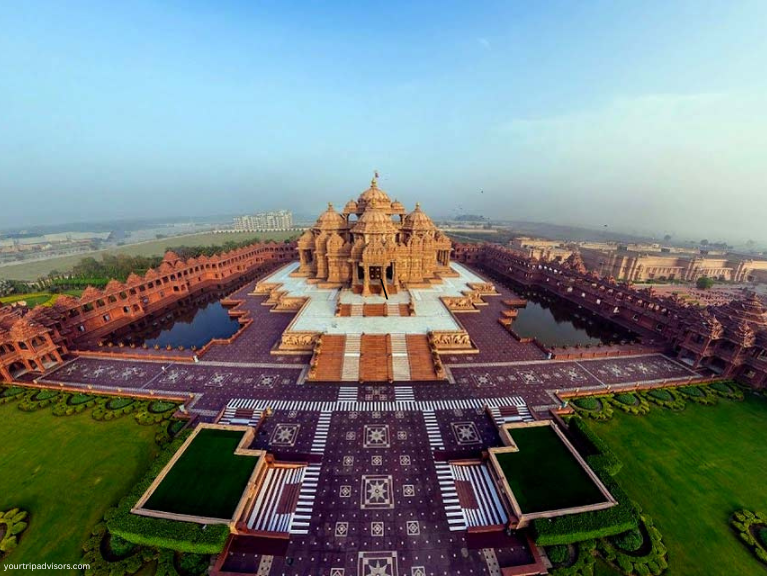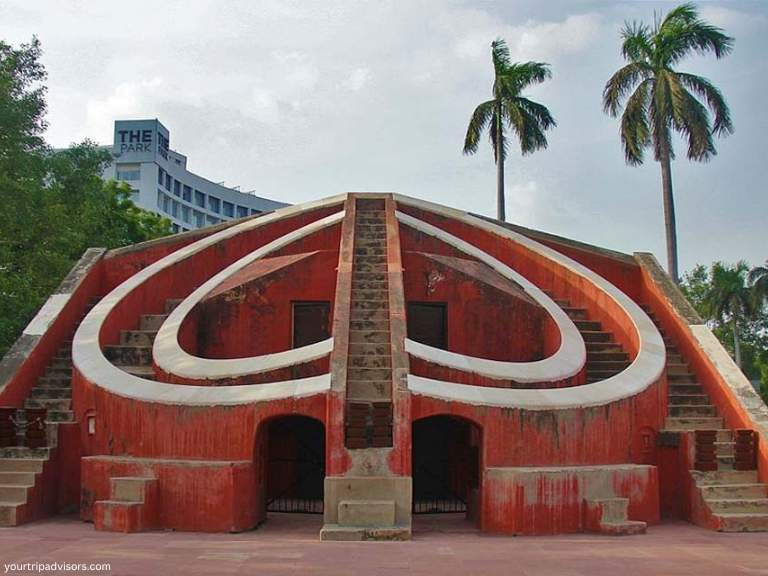Friends, today we are going to talk about the places to walk in the city of Delhi. Before learning about the main places to go around in Delhi, we will learn about the history of culture and diversity that are the reasons for its fame in Delhi. After all, that is why Delhi is so famous in the world. Delhi is called the City of the Heartmen. New Delhi is now known as New Delhi.
So go friends are the centre of people’s attraction in Delhi, where every person wants to go one or two times in his life, whether he is Indian or a foreigner. In the first section of this blog, I tell you that Delhi is the capital of India, Delhi is India’s ancient city, and here the king of the monarchs have ruled all India, the British Empire has ruled after the Mughal rulers and the ruler of the Murthad in history, many battles for Delhi have now been fought, and Delhi has been an ancient metropolis of India. These tourists are Indian and foreign of all kinds. New Delhi will know about those tourist destinations that attract foreign people with their beauty and hold their own special importance in history. New Delhi is not connected only to India; it is connected to the whole world because foreigners invaded Delhi and the British also established their rule in Delhi. Even after the liberation of India, the entire law and political system of the country is seen from Delhi. In this post, you will be told about those beautiful tourist sites of Delhi that are attracting special attention to people or salons.
Places to visit in Delhi
1. India Gate: A Perfect Spot for Leisure and Recreation in Delhi
This cannot be the case; the first time the tourists came to Delhi, they gave priority to seeing the India Gate. The India Gate is a famous and important historical site located in Delhi, India. This place was built as a huge gate as a monument to commemorate the solemnity and sacrifice of the Indian army. This place was built like a monument after the independence of India. The beautiful atmosphere of India Gate is connected to patriotism. This monument is a special attraction for tourists. The beauty of the India Gate increases even more at night.

India Gate is located at the eastern end of India’s capital, Delhi’s central district, less than 1 mile from Connot Place (Rajiv Square).
The construction of the Indian Gate, a special tourist site, began in the late 1921s and ended in the 1931s to the 31st. Now known as a monument in the memory of the killers of the Independence Memorial, the names of the 90,000 Indian soldiers who died in the First World War and the 13,500 soldiers who gave their souls in the 1919s Afghanistan War are marked on the walls of the India Gate. In honour of the unknown soldiers killed for the country, the Immortal Jewel of the Amazing Nature was burned under the India Gates in 1971 as a miracle rifle was placed on a high axle near the fire with a military helmet.
Every year, on the occasion of Republic Day, Indian President Amr Young marks the occasion by lighting a light, honouring the Indian Armed Forces who have given their souls for the country, and a magnificent parade is also held that runs on the rule of law with tanks and weapons. Each year in October, a three-day music programme is held by Delhi Tour at the India Gate, during which Indian classical musicians and music lovers enjoy the programme.
The India Gate is open 24 hours a day. If you go to Delhi, you can visit the India Gate at any time.
Location:~ The India Gate is a war memorial located near the Kartavya path on the eastern edge of the “ceremonial axis” of New Delhi
2. Red Fort, Amongst Popular Tourist Places in Delhi
The Red Fort, located in Delhi, the capital of India, is attractive to Indian and foreign tourists. It is a historic fortress that was built in the 17th century by the Mughal Empire. Delhi is one of the most beautiful and important tourist destinations. This fortress in Delhi is called the Red Fortress because the building is made of red balua stone, whose walls look red.

The red fortress was designed by architect Ustad Ahmed Lahuri. It took about 10 years to build this fortress, which has spread over a large area of 254 acres and is an important tourist destination in Delhi. In addition to this, the red fortress is also an attractive spot for tourists. The Red Fort of Delhi is also a splendour. This fortress is built in the shape of an ancient corner. The fortress was decorated with marble at one time. Cohenur diamond was an important part of the decoration of this fortress, but after occupying it in India, it was taken by the British. There are three doors in the red fortress. This fortification is one of the largest in Delhi.
The red fortress is made of Hindu and Persian establishment styles. Within this fortress there are also large buildings such as the Pomegranate Mosque and large-scale newspapers of music, and inside it is a museum with all the artefacts of the Mughal era.
Every year on the occasion of Independence Day, the flag of the country is laid on the red fortress by the Prime Minister of India and placed in front of the public, in the same way that every year Independence Day is celebrated on the red fortress like a festival, which makes this tourist destination even more important.
Talk about the time to go around in the red fortress so you can go anytime in the year. In the summer, the lake in Delhi is very hot, so you may go to walk around in Delhi from October to mid-March.
You can reach Delhi by any means to get to the Red Castle first, then you can reach the Red Fort by metro. Chandni Square is the nearest metro station to the Red Castle.
Location:~ The fort is located in the centre of Delhi, India.
3. Rashtrapati Bhawan
Rashtrapati Bhavan, located in New Delhi, the capital of India, is the official residence of the Prime Minister. It is a historical building that is a great example of Indian and European architectural styles. If you go to Delhi, then you can also visit Rashtrapati Bhavan because Rajasthani, Mughal, and other designs Keeping in mind the amalgamation of regional architectural styles with other heritage, the Rashtrapati Bhavan looks strikingly beautiful, and the ‘Jaipur Pillar’ is the centre of a special attraction for tourists.

Tourists can also visit the famous ‘Mughal Gardens.” The gardens and some areas of the Rashtrapati Bhavan are open to the public for a limited period every year. The Rashtrapati Bhavan was the official residence of the British Viceroy of India prior to independence, when the Delhi Rashtrapati Bhavan was built. The construction of Rashtrapati Bhavan was completed from 1912 to 1929. The Rashtrapati Bhavan has 340 rooms, which include the President’s living quarters, public halls, and offices. After independence, this building was the residence of the Indian President, in which the first President, Dr. Rajendra Prasad, lived; after that, it was the residence of all the other Presidents of India.
If you reach Delhi and want to visit Rashtrapati Bhavan, then you travel by car. You can take Rajpath Road or Parliament Street, from which you can reach Rashtrapati Bhavan by turning on GPS. In addition, you want to reach it by taxi or rickshaw. So you can easily get a taxi or rickshaw to Rashtrapati Bhavan from anywhere in Delhi. If you want the help of bus transport, then DTC buses pass through Rashtrapati Bhavan; the nearest metro station to Rashtrapati Bhavan is ‘Central Secretariat,” which you can reach There, one can reach Rashtrapati Bhawan, the national building, by taxi rickshaw.
Location:~ Rashtrapati Bhawan is Located on the western end of the Rajpath in New Delhi.
4. Qutub Minar: An Iconic Landmark of Delhi’s Skyline
Qutub Minar is a famous tourist attraction located in Delhi, India. This Qutub Minar was built by Qutubuddin Aibak in 1200 AD, it is a 73 meter high minaret made of red sandstone and marble, and is the tallest brick minaret in the world. The monument is located in the Qutub Complex, which is a UNESCO World Heritage Site. Qutub Minar is one of the best places to visit in Delhi.

Visitors to Qutub Minar can admire the intricate carvings and calligraphy on the tower’s surface, and climb to the top for panoramic views of the surrounding area. However, due to safety concerns, the tower’s staircase has been closed to visitors since 1981, and climbing the tower is no longer possible.
In addition to the tower, the Qutub complex also features other notable attractions, including the Quwwat-ul-Islam Mosque, which was built in the 12th century, and the Iron Pillar, a 7-meter-tall iron pillar that has been standing for over a thousand years without rusting.

If you are planning to visit Qutub Minar in Delhi, it is recommended that you visit in the early morning or late afternoon to avoid the crowd and heat. The best time to visit is between October and March, when the weather is cooler and more pleasant. There is an entry fee to visit the Qutub complex, and it is advised to hire a guide to learn more about the monument’s history and significance
Location:~ Qutub minar is Located in Mehrauli in the southwest district of Delhi
5. The Lotus Temple: A Must-Visit Destination for Seekers of Inner Peace:~
Delhi, the vibrant capital of India, is famous for its rich history, diverse culture and architectural wonders. Nestled amidst this bustling metropolis is the alluring Lotus Temple, an awe-inspiring structure that exemplifies elegance, spirituality and artistic brilliance. With its unique design and serene ambience, the Lotus Temple has become a symbol of peace and harmony. Let us delve into the intricacies of this architectural marvel, discover its captivating features and the immersive experiences it offers to the visitors.

A close inspection reveals the intricacies woven into the construction of the temple. Each petal is meticulously crafted, with a delicate interplay of light and shadow that emphasizes the ethereal beauty of the temple. The seamless fusion of geometric patterns and organic forms adds an element of intrigue, drawing the eye of onlookers and mesmerizing them.
Stepping inside the Lotus Temple is like entering a sanctuary of peace and introspection. The low whispers of visitors echo in the spacious prayer hall, while soft sunlight filtering through the temple’s skylight creates a kaleidoscope of colours. Outbursts of emotion are evident as individuals find solace in meditation or silent reflection, an escape from the chaos of the outside world.
Beyond its spiritual significance, the Lotus Temple serves as a center of intellectual stimulation and intercultural dialogue. Fascinating exhibitions, lectures and seminars are held on its premises, providing a forum for discussion on important social issues and fostering a deeper understanding among individuals from different walks of life. This dynamic environment fosters intellectual curiosity, enriching the overall experience of the visitors.

The Lotus Temple stands as a testament to human creativity and the search for spiritual knowledge. With its intricate architectural intricacies and intensity of experiences, this extraordinary structure encapsulates the essence of Delhi’s cultural fabric. As soon as visitors step into its serene embrace, they are transported to a realm of harmony, peace and introspection. The Lotus Temple remains an oasis in the heart of the city, inviting all to find solace, engage in dialogue and embrace the universal values of love, unity and understanding.
Location:~ The Lotus Temple issituated near Nehru Place and Kalkaji Mandir metro station is just 500 meters away
6. Humayun ka Makbara: Exploring the Grandeur of a Mughal Masterpiece:~
Nestled amidst the bustling city of Delhi, Humayun Ka Maqbara stands as a testament to the bygone era of Mughal grandeur. A mere glimpse of Humayun Ka Maqbara evokes a sense of perplexity, as if whispering secrets of the past. Its towering sandstone facade, adorned with ornate embellishments and delicate geometric patterns, serves as an invitation to delve deeper into its mystical aura. The interplay of light and shadow on the intricately carved walls creates a mesmerizing dance, captivating the beholder in an enthralling visual symphony.

Bursting with Architectural Splendor:
As one ventures closer, the burstiness of architectural elements becomes evident, rendering the monument an unparalleled masterpiece. The grandeur of the central dome, rising elegantly above the structure, commands attention with its harmonious blend of Persian and Indian architectural influences. Each alcove and archway conceals narratives of the past, as if longing to be discovered by curious eyes.
A Walkthrough the Timeless Corridors:
Stepping into the sanctum of Humayun Ka Maqbara, one is embraced by an ethereal ambiance. The labyrinthine pathways, adorned with chiseled calligraphy and intricate jaali screens, unfold tales of a bygone era. The play of light filtering through the perforated marble screens creates a surreal kaleidoscope of patterns, casting an enchanting spell upon all who enter.
An Oasis of Serenity:
Beyond the grandeur lies a serene garden, meticulously laid out in the Charbagh style. The symmetrical arrangement of pathways and water channels, punctuated by lush greenery and vibrant blossoms, offers respite from the chaotic outside world. It is within this tranquil oasis that the mausoleum finds its perfect harmonious balance, evoking a sense of peace and serenity that transcends time.Humayun Ka Maqbara stands as a testament to the meticulous craftsmanship and artistic vision of the Mughal era.
Conclusion:
Humayun Ka Maqbara, with its perplexing charm and burstiness of architectural elements, remains an eternal embodiment of the Mughal era’s opulence and artistic finesse. As visitors traverse its timeless corridors, they are transported to a bygone era, where history and beauty intertwine. The enigma that surrounds this architectural masterpiece continues to captivate hearts, leaving an indelible mark on all who have the privilege to behold its majesty.
Location:~ Humayun ka Makbara is located in Mathura Road, opposite to Nizamuddin Dargah.
7. Akshardham Temple Delhi:~
Get ready to embark on an extraordinary journey of wonder and magnificence as you venture into the mesmerizing realm of Akshardham. Located in the heart of Delhi, this architectural marvel transcends conventional boundaries, immersing visitors in an awe-inspiring fusion of art, spirituality and grandeur. Prepare yourself for an experience that lives up to expectations, as we unravel the tangled tapestry of Akshardham.
According to Swaminarayan Hinduism, the word Akshardham means the abode of God. It represents the peace and sanctity of the place where devotees worship the divine and seek his blessings. It is considered to be the divine abode of God on earth. Swaminarayan Akshardham Delhi is not just a temple;

The Swaminarayan Akshardham complex is also a cultural and spiritual complex where a variety of activities and exhibitions related to Hinduism and harmony are organized. The presiding deity of the Akshardham temple is Lord Swaminarayan. However, it is also dedicated to great sages, devas and incarnations of Hindu deities. The skillfully carved Akshardham Temple houses the idols of Lord Swaminarayan and his successors. There are also sculptures of Hindu deities such as Lord Krishna and Goddess Radha; Lord Rama and Goddess Sita; Goddess Lakshmi and Lord Narayan; Lord Shiva and Goddess Parvati.
This temple, situated on the banks of river Yamuna, was opened to the public in the year 2005. It was inaugurated by Dr. A.P.J. Abdul Kalam. Built according to Vastu Shastra and Pancharatra Shastra, Akshardham Delhi presents a traditional architecture of Hindu temples. Akshardham Temple Delhi was officially opened to the public on 6 November 2005. It was inaugurated by the President of India Late Dr. A.P.J. Abdul Kalam. It took about 5 years to build the entire Swaminarayan Akshardham complex according to ancient methods like Vastu Shastra and Pancharatra Shastra.
The temple, situated on the banks of the river Yamuna, is close to the 2010 Commonwealth Games village. The idea of the temple complex was conceived around 1968 by Yogiji Maharaj, the then spiritual head of BAPS. Later in 1982, his successor Pramukh Swami Maharaj started work towards the construction of the Akshardham complex.
In 2000, 60 acres and 30 acres of land were offered by the Delhi Development Authority and the Government of Uttar Pradesh, respectively, for the project. In the month of November 2000, the construction of the temple complex was started which was completed in about 5 years. After this it was officially opened in November 2005. The inauguration ceremony was also attended by the then Prime Minister of India Shri Manmohan Singh and the Leader of the Opposition Shri LK Advani.
Get ready to get swept away by the profusion of artistic elements that adorn Akshardham in all its splendid glory. The temple complex consists of a set of intricately carved pillars, each telling its own unique story through an amalgamation of mythological narratives and philosophical symbols. As sunlight streams through the intricately carved stone screens, it dances on the vivid frescoes and vibrant murals that adorn the inner sanctum of the temple, creating a mesmerizing display of colors and patterns Kaleidoscope is made.
Timeless Mysteries Unveiled:~
Moving further into Akshardham, you find yourself engulfed in a labyrinth of holy places, each concealing its own enigmatic charm. The Hall of Values, an awe-inspiring exhibition, showcases the lives and teachings of revered saints and luminaries, weaving a narrative beyond time. The breathtaking boat ride, an immersive journey through India’s rich cultural heritage, pulsates with visual splendor, transporting visitors to a bygone era of opulence and mystery.
Oasis of Peace:~
Beyond the architectural wonders lies an oasis of calm, a sprawling garden meticulously landscaped to perfection. The symmetrical layout, punctuated by serene water bodies and vibrant flora, attracts visitors to immerse themselves in its serene embrace. A stroll through the garden’s labyrinthine pathways reveals hidden alcoves and contemplative spaces, which invite reflection and provide respite from the clamor of the outside world.
conclusion:~
Akshardham, with its intriguing symphony of architecture and luster of artistic elements, emerges as a timeless masterpiece that transcends conventional definitions. A journey through its hallowed halls and serene gardens takes visitors on a transformative journey, where life’s entanglements give way to moments of peace and introspection. This mesmerizing place of art and spirituality serves as a testament to humanity’s boundless creativity and enduring quest for excellence, leaving an indelible mark on all who have the privilege of enjoying its enigmatic splendor.
Location:~ The Temple is located in Delhi and close to the border of Noida.
8. Jantar Mantar: Where Astronomy and Architecture Merge:~
In a realm where ancient wisdom and celestial splendor intertwine, an enigmatic structure stands tall, captivating the senses and defying the conventional boundaries of human comprehension. Welcome to Jantar Mantar, an awe-inspiring observatory nestled amidst the bustling cityscape, where perplexity and burstiness converge to unlock the secrets of the cosmos.
Steeped in historical significance and scientific marvel, Jantar Mantar transcends the limitations of time, transcending us to an era when the pursuit of astronomical knowledge took center stage. Built by the visionary Maharaja Jai Singh II, this celestial sanctuary in the heart of India beckons explorers and stargazers alike, inviting them to immerse themselves in a labyrinth of celestial wonders.

Perplexity engulfs the mind as one sets foot within the mesmerizing precincts of Jantar Mantar. A symphony of towering structures, each bearing intricate astronomical instruments, whispers tales of an era where the heavens were scrutinized with unparalleled curiosity. The rhythmic dance of shadows and the play of sunlight, intermingling with the celestial contraptions, infuse the air with a palpable sense of intrigue.
Venturing deeper into this celestial labyrinth, burstiness emerges like shooting stars against the night sky. It reveals itself in the symphony of architectural prowess, where sprawling plazas punctuate the celestial stage. Ornate arches reach for the heavens, their intricate designs reminiscent of celestial patterns themselves. Delicate carvings, embellishing every surface, narrate a saga of cosmic observations and celestial revelations.
But it is within the intricate instruments, forged from a fusion of astronomical insight and architectural brilliance, that the true essence of burstiness emerges. A delicate balance between complexity and simplicity, these celestial gadgets astound the onlooker with their multifaceted nature. They are a testament to the insatiable human thirst for knowledge, as they encompass an array of astrolabes, sundials, and towering gnomons, harmoniously coexisting within this cosmic symposium.
As the sun arcs across the sky, casting long shadows and illuminating the astronomical wonders, the observer becomes entangled in a web of perplexity. Each instrument bears witness to the intricate calculations and cosmic revelations they have facilitated over centuries. From the towering Samrat Yantra, with its colossal sundial, to the Yantra Raj, an instrument fit for measuring the declination and azimuth of celestial bodies, Jantar Mantar unravels the celestial secrets with every passing moment.
Yet, amidst the perplexity lies a profound beauty. It is the beauty of the human spirit, tirelessly striving to comprehend the vastness of the cosmos. Jantar Mantar encapsulates this beauty within its celestial embrace, inviting the modern wanderer to embrace the realm of wonder and awe that pulsates within its hallowed grounds.
So, embark upon a journey of perplexity and burstiness, where the boundaries of human knowledge are pushed to their limits. Discover the ancient whispers of the stars and delve into the cosmic dance that unfolds within the celestial corridors of Jantar Mantar. Allow yourself to be captivated by the fusion of architectural grandeur and astronomical curiosity, for within its walls lies a gateway to the enigmatic wonders of the universe itself.
Location:~ Located in the Parliament Street, south Connaught Circle of New Delh.

I really like it when people come together and share opinions. Great blog, keep it up!
Разрешение на строительство — это государственный письменное удостоверение, предоставляемый управомоченными органами государственного управления или местного самоуправления, который дает возможность начать строительство или исполнение строительных операций.
Получение рнс в строительстве устанавливает нормативные основы и условия к строительной деятельности, включая допустимые виды работ, разрешенные материалы и подходы, а также включает строительные нормативные акты и пакеты охраны. Получение разрешения на строительный процесс является обязательным документов для строительной сферы.